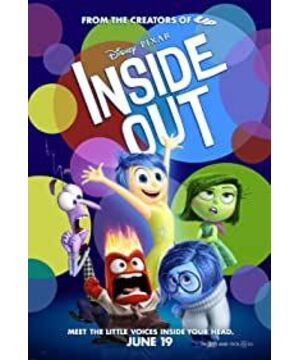In fact, the biggest problem of this film is that the rhythm and themes are very American-style animations. The rhythms strive to be compact and no pee. The plot jokes are all sensational under precise calculations, which are very streamlined and innovative; and the themes are also set for five kinds of losses. Emotional villain, but the main thing that stands out is Joy. The interpretation of Sadness is only a sigh. You admit its necessity, but it is ultimately a supporting role. It is the vent of emotions and the call to family and friendship is part of memory. But just don't face it to appreciate it. After all, the core of American animation is to look at everything positively. It is always a bowl of chicken soup, unable to face reality and touch people's hearts.
American animation deliberately removes too much content that is not suitable for the "physical and mental development" of children for all ages, but even so, if happiness in the animation is genuine, it is fine as long as sadness, anger, and other things are not adulterated. But the problem is that Inside Out deliberately strengthens joy and suppresses other emotions. What's interesting is that American culture also places great emphasis on positive energy, which contrasts with the massive use of painkillers and the prevalence of talk shows.
In fact, as a Pixar film Inside Out, it is considered passable. After all, Pixar is also a professional chicken soup film, but the positive energy is very clever and some are very outstanding. But in my mind, these American 3D works are still not as good as any of Studio Ghibli's works, they are the works that really touch people's hearts.
View more about Inside Out reviews











